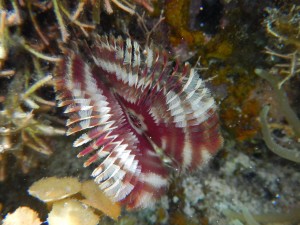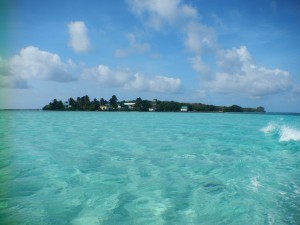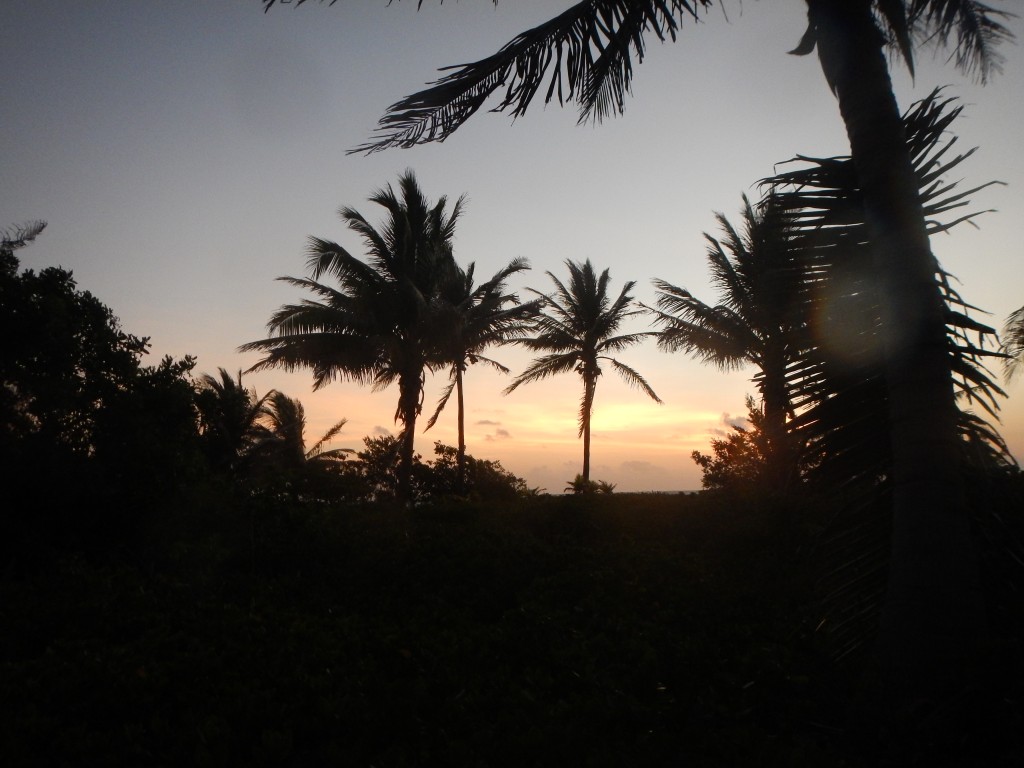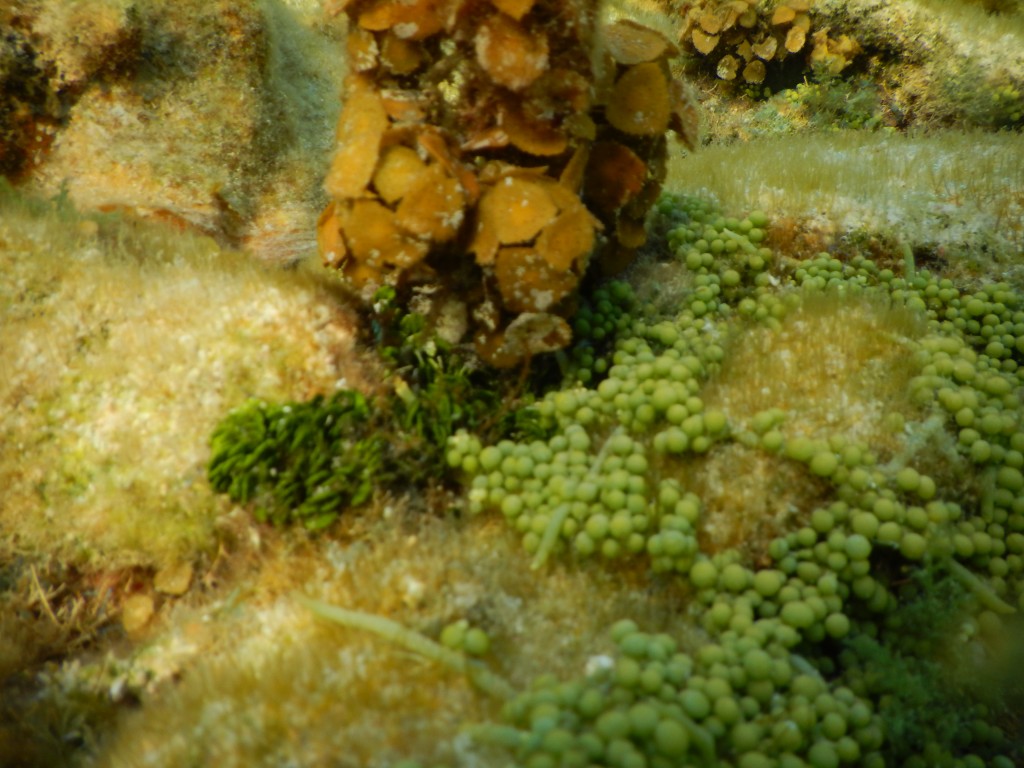My emotions were a rollercoaster today. I woke up to a dreary, rainy sky. The weather suited our morning activity: a project about marine debris. You can imagine how that went. We decided to study the differences in composition and amounts of marine trash that we’d find on the windward and leeward sides of our island, Middle Caye.
I’ve seen few things as saddening as a shoreline of a place even as relatively pristine as Glovers Reef covered in human detritus. This area is in the center of a Marine Protected area, is designated as a world heritage site, and is regularly cleaned by the crew who lives here.
And yet the fossilized corals were still littered with old shoes, plastic bottles, rope, nets… we only collected trash for 15 minutes at the windward side of the island, the coral fossil graveyard, but already filled two huge garbage bags. We barely made a dent in the amount of trash.
We moved to the leeward side of the island, the mangrove forest. This section of the island fared no better. Here, we found smaller fragments of trash, but more individual pieces of trash. We also found a larger variety of types of trash on the leeward side than the windward side. This was probably because pieces of debris can escape the windward side, but then wind up getting trapped on the leeward side.
As we collected trash, the only thought in my mind was that everything I’ve ever lost – a plastic bottle here, a candy wrapper there – is probably in the ocean now. Large chunks of debris slam against already fragile coral ecosystems. Sharks and sea turtles accidentally ingest plastic, thinking that it’s food. In a particularly poignant example of the consequences of human irresponsibility, we spotted a huge nurse shark at a patch reef later this afternoon.
It had a plastic bottle tied around its fin with a fishing line. Here’s a photo.

Instead of using plastic or paper, use reusable utensils. Don’t use plastic straws – your drink tastes the same whether it reaches you via straw or not. Make sure that your trash actually ends up in the trash can. Reduce waste, recycle your stuff. It’s not that hard and only requires small adjustments to make a world of difference for our marine ecosystems. I, for one, know I can do better.
We as a species must do better. If we don’t, it’s unlikely that many marine ecosystems, especially coral reefs, will last another 50 years. I don’t want to have to tell my grandchildren about the fabled coral reefs because they’ll never get to see them for themselves.
My mood in the afternoon was a stark contrast to my mood in the morning. We went out snorkeling with the boat for one last time and hit three different areas near our island.
Hopping into this water never gets old. We visited an area known as The Aquarium, which is known for having many beautiful fish. It sure lived up to its name; I felt like I was swimming in one of the exhibits at my local aquarium.
I spent some time peeking in crevices for urchins, and found many clusters of small long-spined sea urchins hidden between the rocks. They really do look like the hedgehogs of the sea! I also found some tiny juveniles on the undersides of reef rock that I turned over – one baby slate pencil urchin and one long-spined urchin. I find it fun that while adult long-spined urchins are purely dark purple to black, the juveniles are banded white and black.
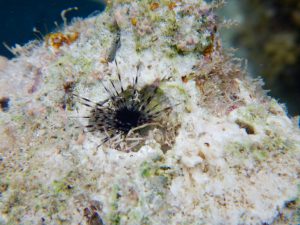 Juvenile long-spined sea urchin.
Juvenile long-spined sea urchin.
We also swam at a deeper patch reef.
 Beautiful elkhorn coral specimen (scientific name Acropora palmata) that I found at the deeper patch reef.
Beautiful elkhorn coral specimen (scientific name Acropora palmata) that I found at the deeper patch reef.
The best part of today, and maybe part of the whole trip so far, was swimming at the reef crest. Usually, this area is too turbulent and murky for swimming, but we got lucky. The water was so still and clear. I floated over the shallows, marveling over the blueness and the richness of life. I kind of feel like this place should be dubbed the aquarium because everywhere I looked, fish swam near enough to touch. They weren’t timid either! Groupers hid in rock holes and blue tangs darted between anemones.
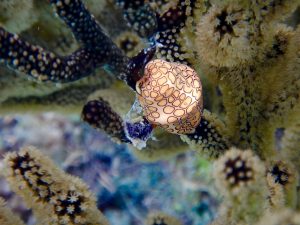 This picture is here just because I think it’s so cool – this is a mollusk commonly known as flamingo’s tongue! I found it at the reef crest.
This picture is here just because I think it’s so cool – this is a mollusk commonly known as flamingo’s tongue! I found it at the reef crest.
This place was teeming with long-spined sea urchins, too. They were everywhere in between coral cracks. These guys are grazers, so I bet they were having a great time munching away at the algae encrusting exposed coral rock.
Also, I can’t believe that tomorrow is our last full day! NooOOOooooO I don’t wanna go back to Houston 🙁

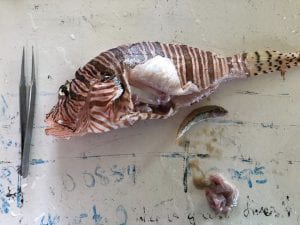


 Juvenile long-spined sea urchin.
Juvenile long-spined sea urchin. Beautiful elkhorn coral specimen (scientific name Acropora palmata) that I found at the deeper patch reef.
Beautiful elkhorn coral specimen (scientific name Acropora palmata) that I found at the deeper patch reef. This picture is here just because I think it’s so cool – this is a mollusk commonly known as flamingo’s tongue! I found it at the reef crest.
This picture is here just because I think it’s so cool – this is a mollusk commonly known as flamingo’s tongue! I found it at the reef crest.


